Research Highlights
Research Highlights
A selection of highlights culled from publications by HAO staff.
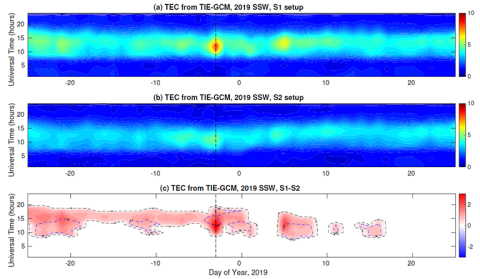
On the variability of total electron content over Europe during the 2009 and 2019 Northern Hemisphere SSWs
T. A. Siddiqui, Y. Yamazaki, C. Stolle, A. Maute, J. Lastovicka , I. K. Edemskiy, Z. Mosna investigated the variations of the TEC over Europe during two northern hemisphere SSWs events in 2009 and 2019 examining the dominant drivers and their respective contributions to TEC changes during both SSW events.
Critical Science Plan for the Daniel K. Inouye Solar Telescope (DKIST)
Sarah Gibson, Philip Judge, Mark Rast, Nazaret Bello Gonzalez, Luis Bellot Rubio, and others assert that the Daniel K. Inouye Solar Telescope (DKIST) will revolutionize our ability to measure, understand and model the basic physical processes that control the structure and dynamics of the Sun and its atmosphere.

Designing a New Coronal Magnetic Field Energy Diagnostic
In the solar corona, the free energy, i.e., the excess in magnetic energy over a ground-state potential field, forms the reservoir of energy that can be released during solar flares and coronal mass ejections. Marcel F. Corchado-Albelo, Kévin Dalmasse, Sarah Gibson, Yuhong Fan, and Anna Malanushenko investigate the possibility of exploiting such observations for mapping and studying the accumulation and release of coronal free magnetic energy, with the goal of developing a new tool for identifying "hot spots" of coronal free energy such as those associated with twisted and/or sheared coronal magnetic fields.
Refactoring the MPS/University of Chicago Radiative MHD (MURaM) Model for GPU/CPU Performance Portability Using OpenACC Directives
E. Wright, D. Przybylski, M. Rempel, C. Miller, S. Suresh, S. Su, R. Loft and S. Chandrasekaran present challenges and strategies to accelerate a multi-physics, multi-band MURaM using a directive-based programming model, OpenACC in order to maintain a single source code across CPUs and GPUs.
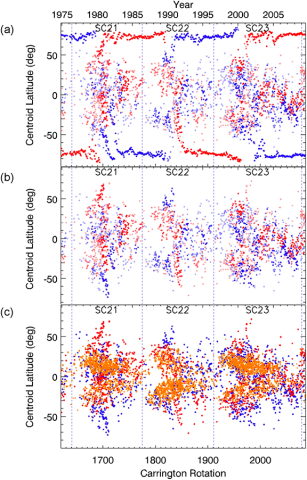
Study of Coronal Hole Lifetimes
Ian Hewins, Sarah Gibson, David Webb, Bob McFadden, Thomas Kuchar, and Barbara Emery-Geiger use the McIntosh Archive of solar features to analyze the evolution of coronal holes over more than three solar cycles. They demonstrate that coronal hole positions and lifetimes change dramatically on time scales from months to yrs, and that the pattern of these changes is clearly linked to the solar activity cycle.
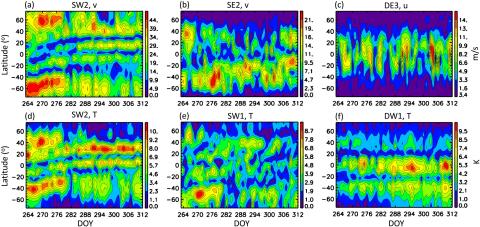
Planetary wave (PW) generation in the thermosphere driven by the PW-modulated tidal spectrum
J. M. Forbes, X. Zhang, and A. Maute, (2020) use the NCAR thermosphere-ionosphere-
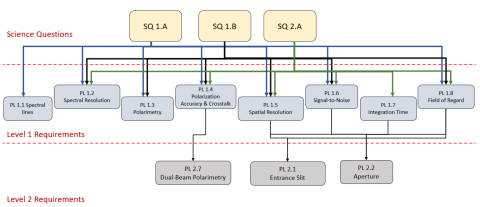
Solar Transition Region UltraViolet Explorer (STRUVE) requirements flow down to design
In this paper, Johnathan Gamaunt, Angelica Berner, Alfred de Wijn, Paul Scowen, and Robert Woodruff, aim to illustrate the flow down of requirements from the mission science objectives to design requirements while also giving an overview of the design developed from the concept study. This mission, funded by NASA, uses the Solar Transition Region UltraViolet Explorer (STRUVE) miniature satellite conceived to study the magnetic field in the solar atmosphere.
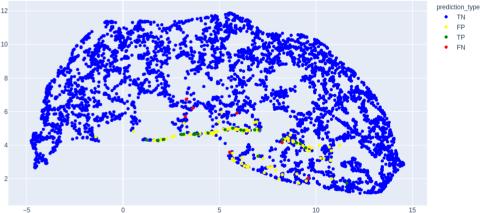
Predicting the Geoeffectiveness of CMEs Using Machine Learning
Andreea-Clara Pricopi, Alin Razvan Paraschiv, Diana Besliu-Ionescu, and Anca-Nicoleta Marginean state, in the Astrophysical Journal, that coronal mass ejections are the most important space weather phenomena, being associated with large geomagnetic storms, and having the potential to cause disturbances to telecommunications, satellite network disruptions, and power grid damage and failures.
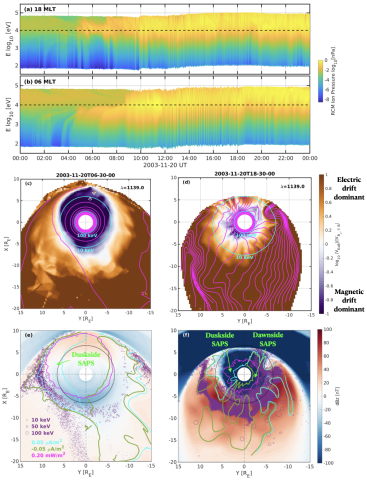
Origin of Dawnside Subauroral Polarization Streams during Major Geomagnetic Storms
Dong Lin, Wenbin Wang, Viacheslav Merkin, and Chaosong Huang show that solar eruptions of mass and magnetic field can trigger geospace storms. The most well-known storm phenomenon is the aurorae in the Earth's high latitude upper atmosphere. They emphasize how extremely high storm activity levels may have severe adverse effects on human society and infrastructure.